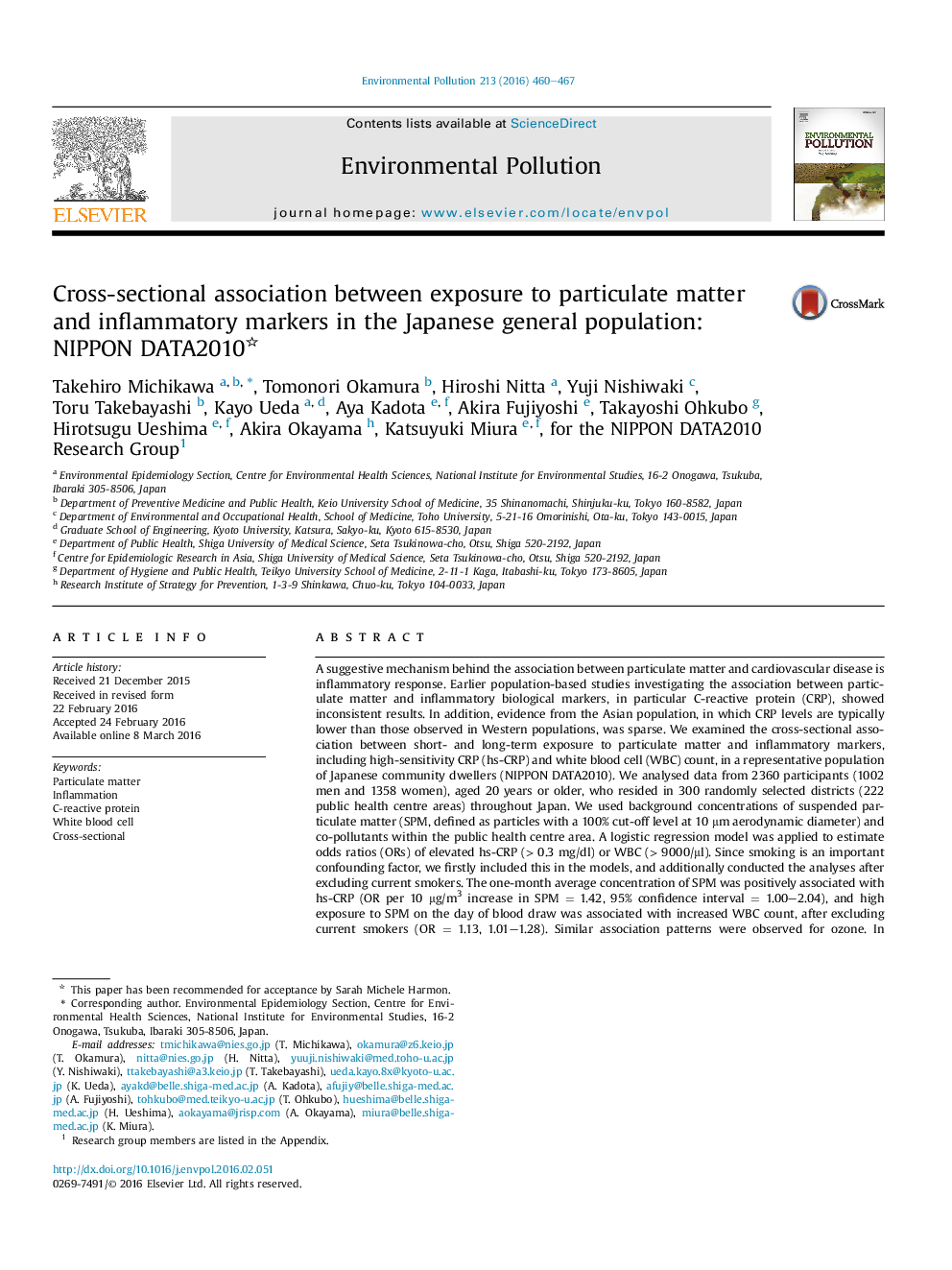| کد مقاله | کد نشریه | سال انتشار | مقاله انگلیسی | نسخه تمام متن |
|---|---|---|---|---|
| 6314914 | 1619160 | 2016 | 8 صفحه PDF | دانلود رایگان |
عنوان انگلیسی مقاله ISI
Cross-sectional association between exposure to particulate matter and inflammatory markers in the Japanese general population: NIPPON DATA2010
دانلود مقاله + سفارش ترجمه
دانلود مقاله ISI انگلیسی
رایگان برای ایرانیان
کلمات کلیدی
موضوعات مرتبط
علوم زیستی و بیوفناوری
علوم محیط زیست
شیمی زیست محیطی
پیش نمایش صفحه اول مقاله

چکیده انگلیسی
A suggestive mechanism behind the association between particulate matter and cardiovascular disease is inflammatory response. Earlier population-based studies investigating the association between particulate matter and inflammatory biological markers, in particular C-reactive protein (CRP), showed inconsistent results. In addition, evidence from the Asian population, in which CRP levels are typically lower than those observed in Western populations, was sparse. We examined the cross-sectional association between short- and long-term exposure to particulate matter and inflammatory markers, including high-sensitivity CRP (hs-CRP) and white blood cell (WBC) count, in a representative population of Japanese community dwellers (NIPPON DATA2010). We analysed data from 2360 participants (1002 men and 1358 women), aged 20 years or older, who resided in 300 randomly selected districts (222 public health centre areas) throughout Japan. We used background concentrations of suspended particulate matter (SPM, defined as particles with a 100% cut-off level at 10 μm aerodynamic diameter) and co-pollutants within the public health centre area. A logistic regression model was applied to estimate odds ratios (ORs) of elevated hs-CRP (> 0.3 mg/dl) or WBC (> 9000/μl). Since smoking is an important confounding factor, we firstly included this in the models, and additionally conducted the analyses after excluding current smokers. The one-month average concentration of SPM was positively associated with hs-CRP (OR per 10 μg/m3 increase in SPM = 1.42, 95% confidence interval = 1.00-2.04), and high exposure to SPM on the day of blood draw was associated with increased WBC count, after excluding current smokers (OR = 1.13, 1.01-1.28). Similar association patterns were observed for ozone. In conclusion, exposure to particulate matter was associated with inflammatory markers in the general Japanese population. Systemic inflammation may play a role in the link between particulate matter and cardiovascular disease.
ناشر
Database: Elsevier - ScienceDirect (ساینس دایرکت)
Journal: Environmental Pollution - Volume 213, June 2016, Pages 460-467
Journal: Environmental Pollution - Volume 213, June 2016, Pages 460-467
نویسندگان
Takehiro Michikawa, Tomonori Okamura, Hiroshi Nitta, Yuji Nishiwaki, Toru Takebayashi, Kayo Ueda, Aya Kadota, Akira Fujiyoshi, Takayoshi Ohkubo, Hirotsugu Ueshima, Akira Okayama, Katsuyuki Miura,